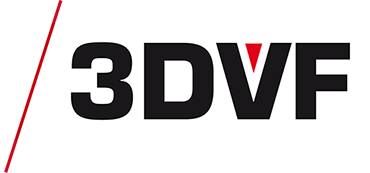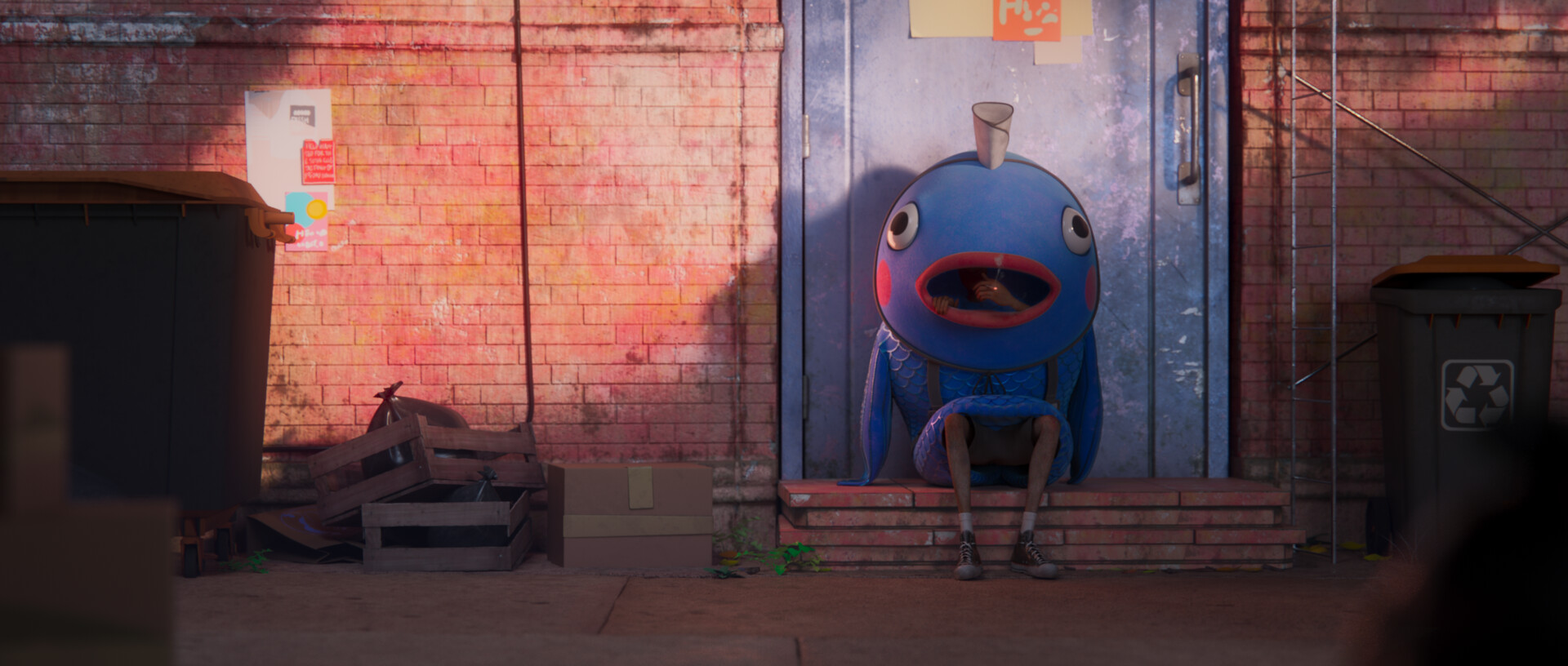This article is also available in:
Français
Straight from the latest graduating class of French digital art shcool MoPA, the short film Au Revoir Mon Monde (Goodbye My World) is currently making rounds in festivals.
It follows a young man working as a mascot for a sushi restaurant. As a threat becomes more and more, he embarks on a frantic race against time…
Goodbye My World begins with an unlikely situation that leads to a strong story, a film rich in FX with thoughtful artistic direction. The short film isn’t available online yet, but we invite you to watch the trailer. We wanted to know more about the inception of the short film, and we interviewed the team behind it: Astrid Novais, Florian Maurice, Quentin Devred, Maxime Foltzer, Estelle Bonnardel, and Baptiste Duchamps.
Please note that the interview might include some spoilers.
3DVF: Hello to the whole team! “Goodbye My World” follows a young man working for a sushi restaurant and wearing a mascot costume. He embarks on a desperate race as the end of the world seems imminent.
How did you come up with this core idea?
Florian: The loss of a loved one was an experience I had very early in my life. Following that, I also experienced, like many people, romantic breakups, separations on long or short terms with people dear to my heart, sometimes without the possibility of saying goodbye to them. What better event than the apocalypse to address all these themes, right? Obviously, the film deals with a subject that is not necessarily the most joyful; after all, we’re talking about the act of having to say goodbye to someone we love. So, it was important for me and the team to approach it subtly and with a lot of fun and tenderness! With the ambition of making a somewhat strange action film, considering the time and restrictions of a student film production.
Maxime: Florian came up with the original concept, and we were captivated by its strength. Some ideas, such as the character being stuck in his costume, were added later, but the essence was already there.
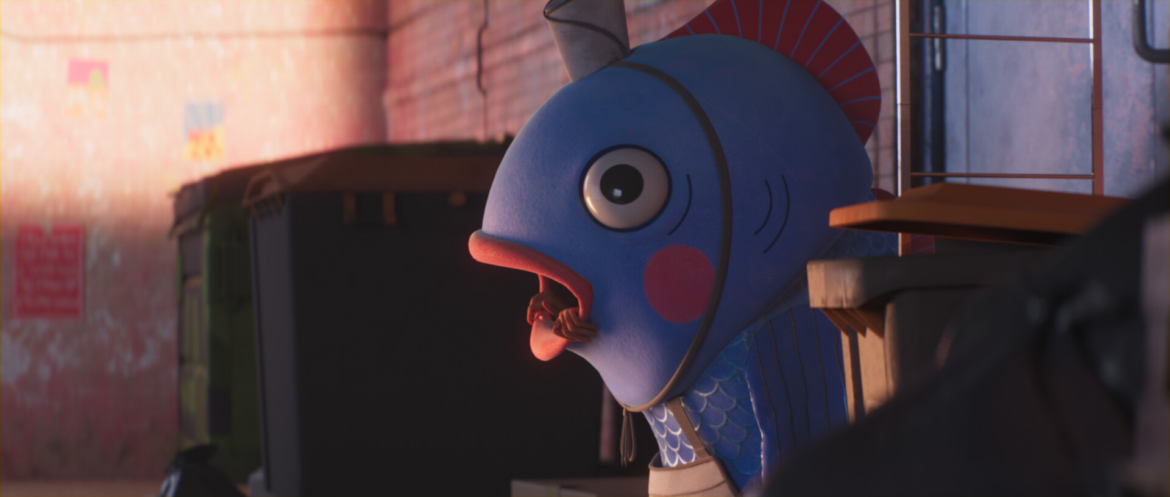
3DVF: Which tasks where each one of you in charge of, on this film?
Florian: For pre-production, I was in charge of writing the screenplay, character designs, and storyboarding in collaboration with Astrid. Then I moved on to Layout with Maxime and finally ended up with animation.
Astrid: I was part of the writing team at the beginning of production. Then I started working on the storyboard with Florian. After that, I rigged the characters and animated them. Throughout production, I handled the editing and made sure the shots were updated.
Maxime: In pre-production, I took part in the writing process and in the creation of tools to improve the pipeline. Then, I worked on layout, look development, TD on the Maya part, and then on lighting/rendering and compositing for half of the film.
Estelle: During pre-production, I worked on concepts, character design, and the artistic direction of the film. During production, I mainly worked on surfacing and lighting/compositing in collaboration with Maxime.
Quentin: During pre-production, I focused on R&D for the FX and the Maya-Houdini-Arnold pipeline. Then I was in charge of FX and CFX. I also did some rigging (camera/vehicles) and helped with compositing towards the end of the project.
Baptiste: During pre-production, I took care of a large part of the research for everything that would be at the heart of our film: artistic direction references, mascot gesture references, etc. During production, I worked on the environment modeling (city, car, scooter, etc.) and sculpted the characters of our film (mascot, Iris, Karime) based on the team’s concepts. I continued to handle part of the set dressing, texturing, and even lighting for a shot.
3DVF: The main character spends most of the film in a huge costume. This obviously poses challenges in terms of animation, character FX, and simply in terms of acting, since we don’t see a face. How did you approach these issues?
A: Without his face, we had to focus on his body to convey his emotions. There was a lot of acting work with Florian to make our fish as expressive and dynamic as possible, which wasn’t easy with his costume. The voice acting also helps to remind the viewers that there is indeed a human inside the mascot.

F: Yes, exactly! Everything had to go through the character’s gestures; we relied on the Kuleshov effect to suggest the hero’s emotions despite his huge mask. We allowed ourselves to make very slight modifications to the shape of his mouth depending on the shots. For example, giving a slight smile, an open mouth, or even sometimes subtly animating it directly in front of the camera.
When working on the acting, to further highlight the body’s gestures, I wore a motorcycle helmet to truly hide any emotion in front of Astrid.
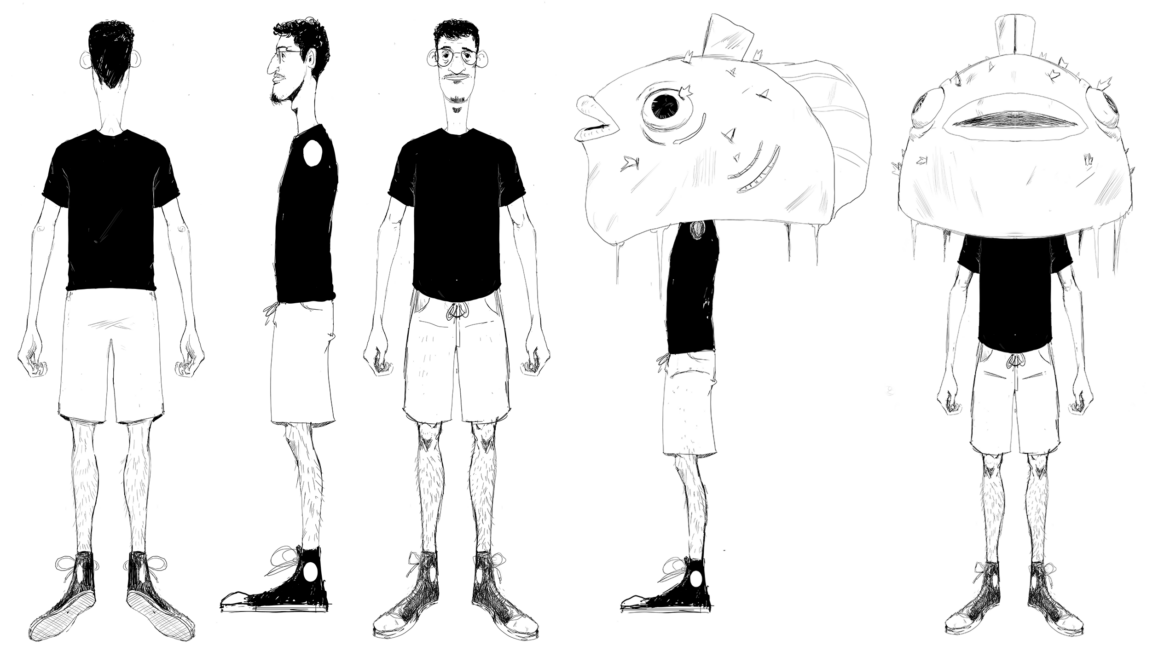
M: From the beginning, the question of leaving his face in the costume arose. We decided to keep the head to give us freedom at the lighting and compositing stage, suggesting the character without necessarily showing his face.
Of course, this posed problems for compositing and grading, and we had to work shot by shot to ensure that only the necessary parts of the character’s head were visible!
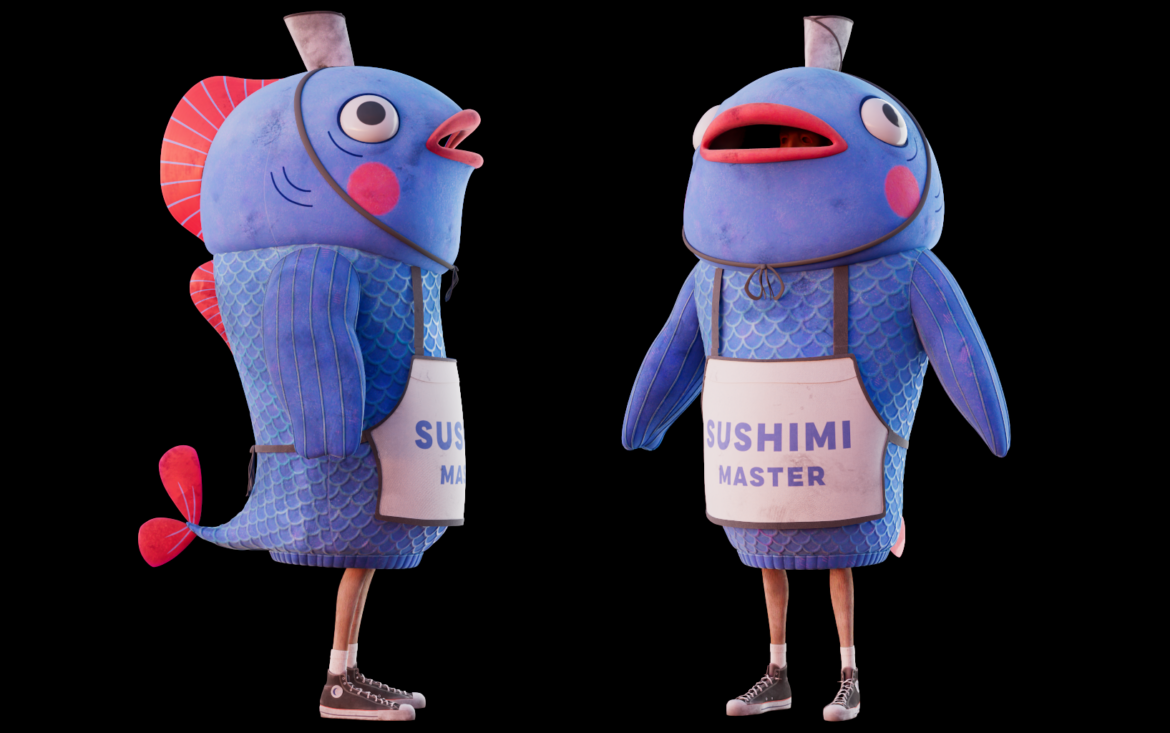
Q: The challenge of CFX was approached with several procedural setups, whether for the costume, cloth, or the grooming of the two lovers.
The first one corrected penetrations and improved the character’s contacts with his costume and the environment.
Another setup made the costume “squishy” in specific areas (fins, mouth, tail, belly), accentuating the bouncy effect.
And finally, a third procedural setup was used for the two characters together, to manage the collisions involved in the hug.
These setups took some time to create but saved time on all shots with CFX due to the ease of duplication. The animators had a pre-roll protocol to follow during export, and the tool did the rest.
B: The idea was that I had to translate as closely as possible the appearance, character, and shape of Florian’s concept drawings, while also considering how it would be animated later on. It was a very enriching experience in communication with the team, and especially Florian, to find the best version of what he envisioned.
3DVF: The team clearly took great care when working on color, and you tried to balence warm tones, golden hour lighting, and blues and purples.
Can you walk us through this process? And how did this translate in terms of color script, lighting, and surfacing?
F: As mentioned earlier, we wanted to create a funky and strange film with neat, vibrant colors. We didn’t want to fall into the trap of a palette of grayish and overly desaturated colors, as you might find crudely in a disaster movie! As for the golden hour, in addition to having symbolic meaning in our film, we were heavily inspired for the lighting by the short film that bears the same name, Golden Hour from Gobelins School. Having Estelle on the team was a major asset for this film because her artistic direction was exactly what we wanted, and she did a remarkable job using all these colors.
E: After gathering references and establishing a mood board for the different sequences of the film, I started working on concepts for different key moments of the film, thinking about different possible moods, while trying not to fall into disaster movie clichés. When it comes to the surfacing, the idea was to have realistic textures, inspired by Pixar’s Soul, but with touches of color.
M: Once Estelle created the color scripts and concepts, we took key shots and tried to translate the atmospheres and colors into 3D.
We then divided the shots into lighting and compositing. Lighting was an element we wanted to push, aiming to capture the essence of the shots at this stage. Compositing was more of a polishing step, allowing us to further enhance the colors.
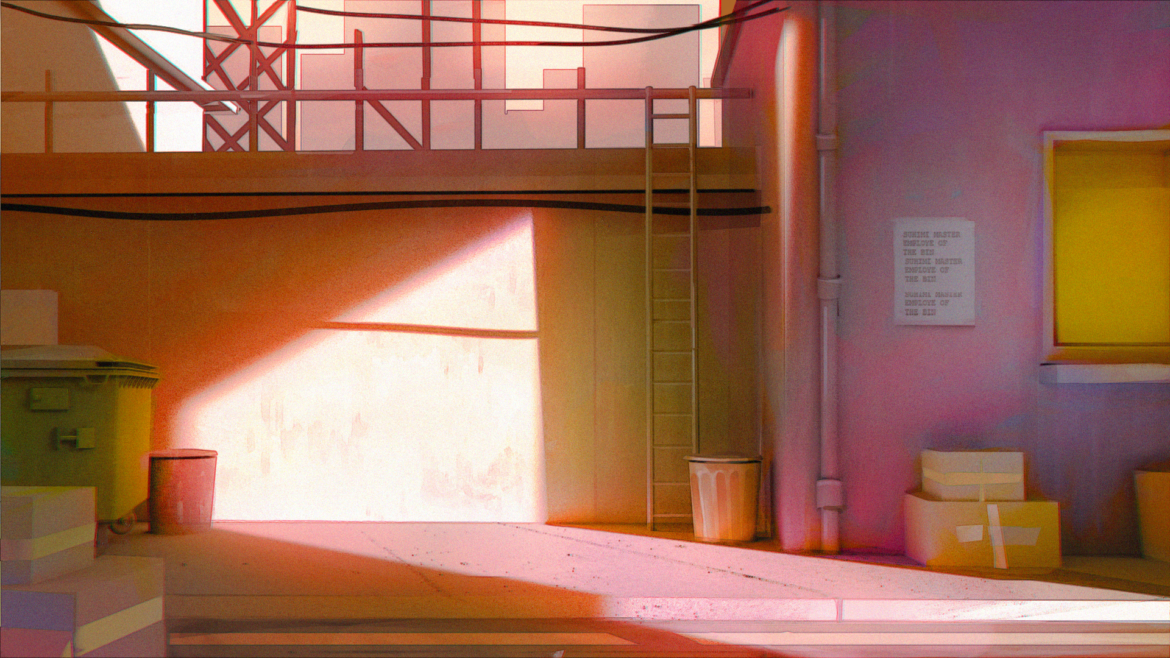
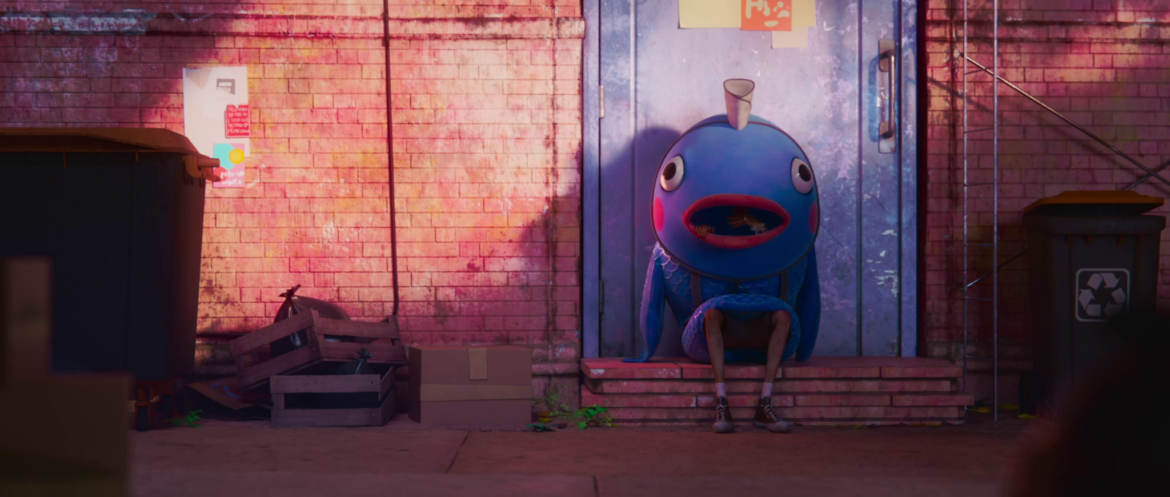
3DVF: Regarding staging and cameras, you had two challenges: conveying the scale of the ongoing disaster and working with a scenario that has two distinct tones, action sequences followed by a very strong climax. Can you tell us more about this part of the project?
F: We knew our story was very simple and needed to be as appealing as possible; it needed to move! We knew the film was ambitious, and the watchword was to preserve Quentin’s physical and mental health, as he was almost alone in charge of the film’s FX, and to keep in mind that our film was a student project with no budget and very little production time. With these issues in mind, we had to apply our knowledge and references in terms of storytelling through the storyboard, whether it be through the biggest Hollywood blockbusters, independent films, graphic novels, animations, etc.
Everything was fair game! The notion of the gigantism of this apocalypse was heavily influenced by Gareth Edwards’ work. I also wanted to bring in Spielberg’s virtuosity in shots, Peter Jackson’s dynamic and sweeping cameras, Michael Bay’s chaos and energy, Edgar Wright’s pacing and vibe, Satoshi Kon’s quirky universes, as well as the realism of Alfonso Cuarón’s and the dreaminess of Terrence Malick’s films.
This part was a true sandbox! We even considered a long take at the beginning of the film. Of course, the idea was quickly abandoned. We used a lot of long focal lengths to give a very compressed and 2D feel to the contemplative shots, then returned to much shorter focal lengths for action-packed and dynamic shots.
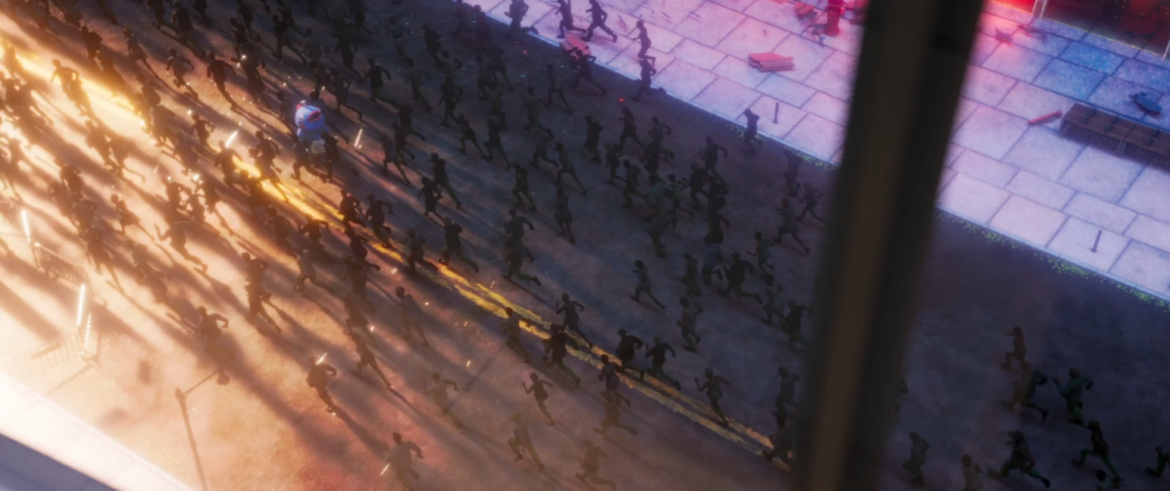
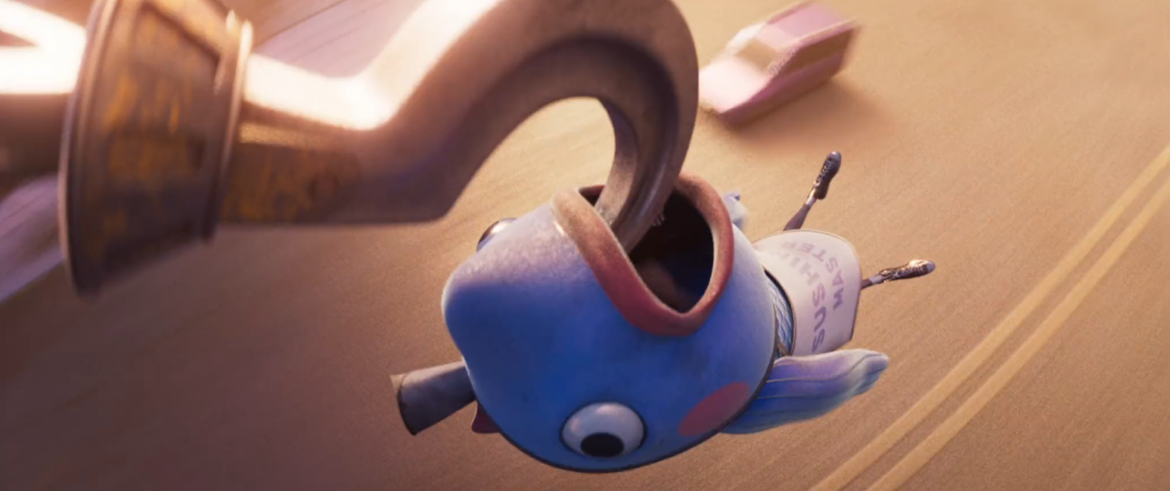
M: Cameras were a crucial element for the success of the project. We tried to make them as realistic as possible, and Florian’s work animating them was monumental. For rendering, we chose to keep the Depth of Field (DoF) and motion blur directly in the rendering engine to save time in compositing and, most importantly, to achieve the most realistic effects possible.
In the final part of the film, we tried not to have a single shot without movement, whether it was the camera, the characters, or the background effects. This posed a significant challenge since we didn’t have the resources of a studio. So, we made concessions by cutting shots that could be cut and simplifying actions, but always keeping in mind that movement and the disaster aspect had to be preserved.
A: The evolution of the tone of the film was a challenge that we had to overcome. We revised the storyboard and animatic several times to ensure that everything was coherent, dynamic, and entertaining. We juggled between comedy and drama until ending on an emotional moment, which I hope resonates. Starting with humor, our character became endearing, and we really wanted the audience to want to follow his journey to the end. The gravity of the situation is nuanced by the lightness and surrealism of the action scenes. It was important that in the end, the transition to a more realistic and intimate tone worked. The tearing of his costume acted as a breaking point and allowed the entry into the final atmosphere of the film.
3DVF: Can you also talk about the female character? Especially her character design and the multiple emotions that needed to be conveyed in just a few shots?
A: Even though Iris (the female character) is only visible at the end of the film, we delved deeply into her personality and the emotions she experiences. We wanted her acting to be subtle, spontaneous, but above all, very clear so that the viewer easily understands who she is. At the moment when she is seen, many emotions animate her: distress and incomprehension that she tries to contain, then she lets go under the emotion when she realizes that her partner has come for her. Hierarchizing her emotions was very useful during the animation.
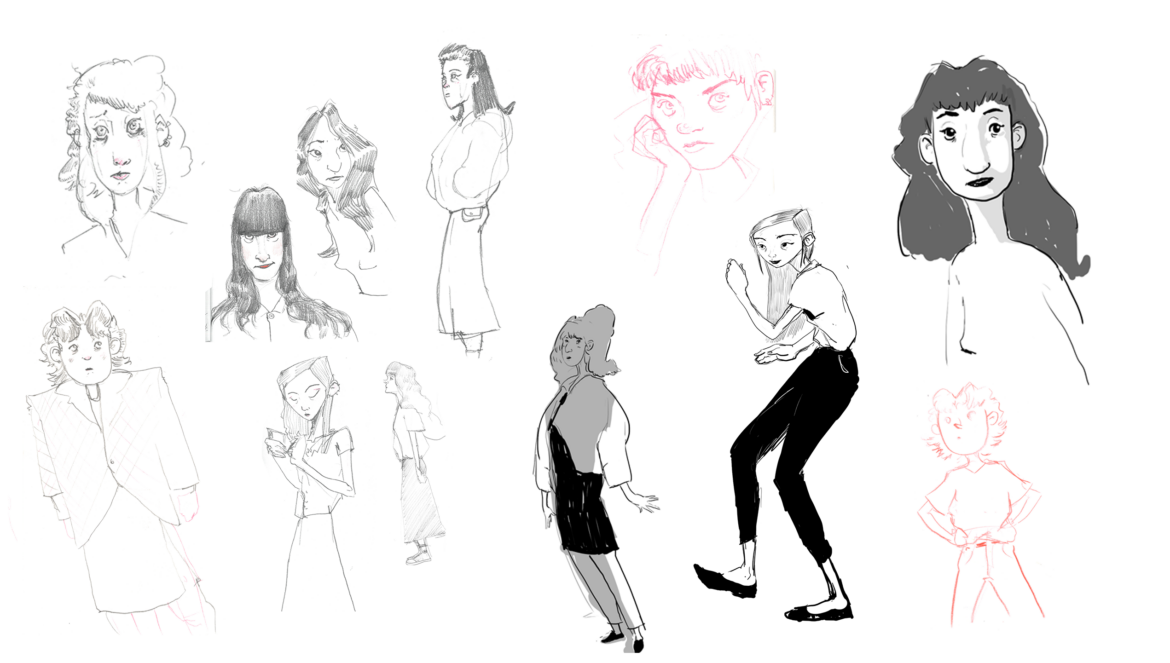
F: Iris was the first character we worked on, and as Astrid said, we were very involved in characterizing her! It was crucial, when creating Iris, that we put ourselves in the shoes of the hero who loves her and tries everything to find her. She had a much more significant role in the early versions of the script. She was highlighted as a manager within the place where she works, and we saw her helping people amidst the chaos. Unfortunately, we had to let go of these elements due to lack of time and resources.
Her character design had to convey the idea we had of her. A gentle and kind person, someone you want to be friends with! But she also had to be strict and capable of bearing heavy responsibilities on her shoulders. Making her tall and slender seemed like a good way to express the cheerfulness and kindness she could exude. Actress Audrey Hepburn was one of my main references for the aura she had to exude, as well as several people in my circle. She should not be stereotyped with shapes that sexualize her, that was out of the question!
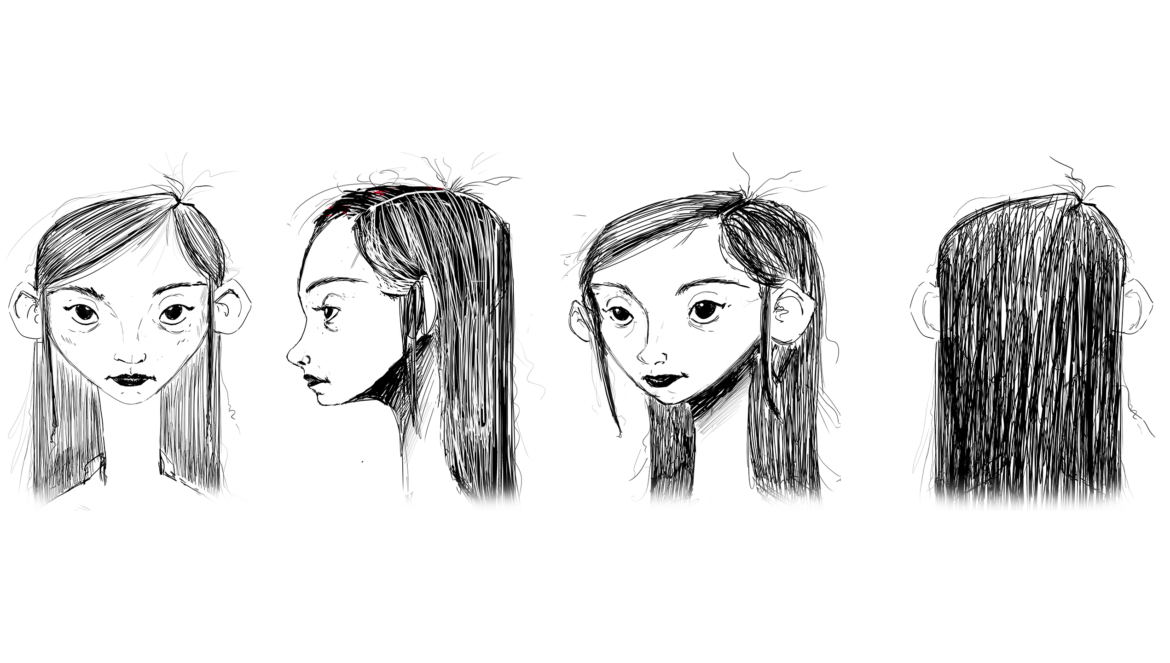
B: I first wanted to sculpt her in clay to physically model her face with my hands. The idea was to continue the research based on Flo’s concept while continuing to evolve her with his feedback. But above all, to give her character and life by working on her in clay. I then used photogrammetry to scan the sculpture before importing it into ZBrush to finalize it.
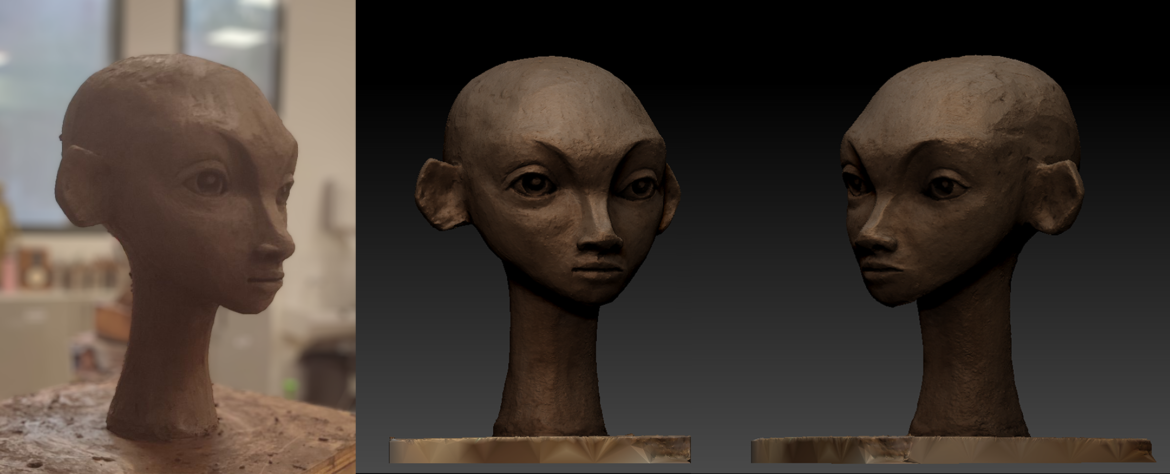
3DVF: Fire, smoke, destruction, and this hypnotic celestial phenomenon, which is reminiscent of Sunshine or Solaris… FX play a major role in the short film.
How did you plan their creation? What references did you use? What were the biggest technical and artistic challenges?
Q: The planning of the project in terms of special effects started during pre-production, with R&D for the pipeline, effects tests, and the creation of tools for procedural buildings in view of the destructions.
One concern was to transfer effects between Houdini and Maya. Tests were needed for the FX and CFX pipeline. Another major concern was the disk space and the power of the machines. Optimization was crucial.
Regarding FX, the design and look dev were done in Houdini, then FX were imported into Maya for final renders, thus avoiding match-lighting in Houdini and tedious integration in compositing.
To save disk space, less complex effects, such as the huge meteorite, as well as some more complex shots, such as the destruction of the building forming a wave of glass, were rendered in Houdini and then integrated in compositing, avoiding exporting Alembic data that would have been too heavy compared to the storage we had.
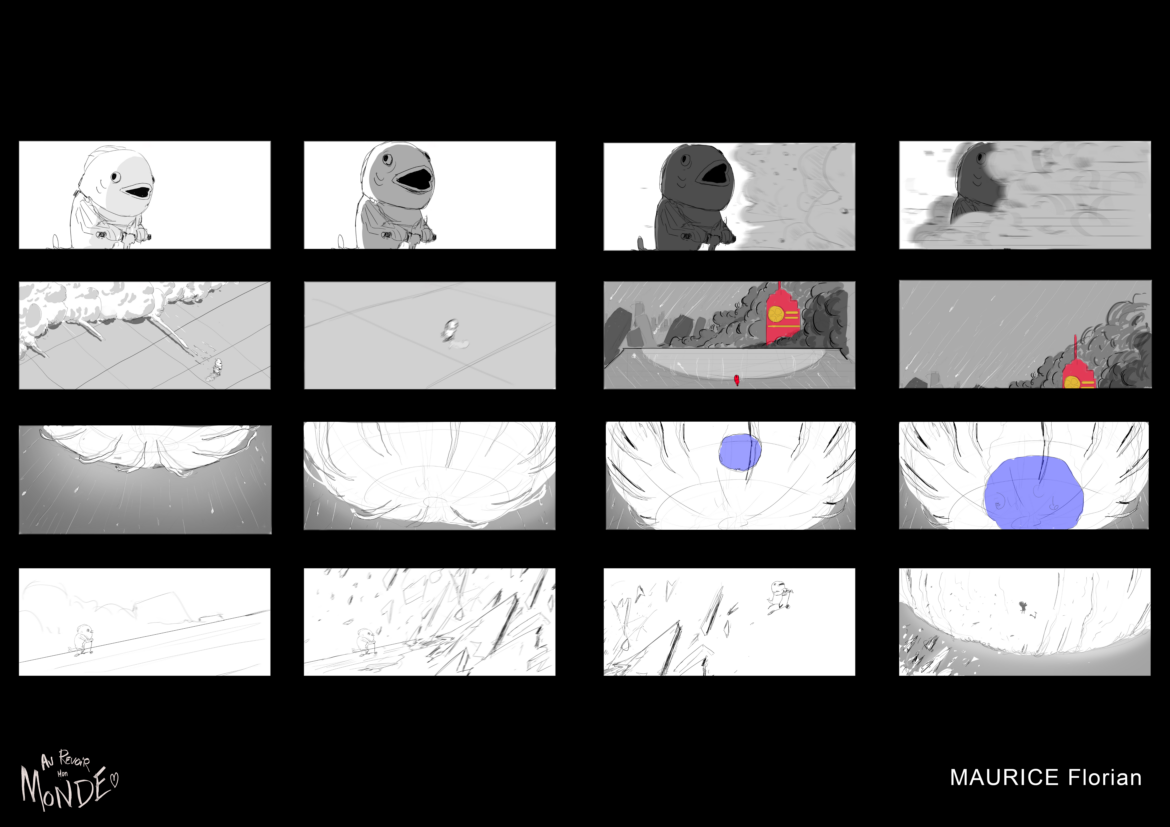
Several fire and smoke effects were rendered once with variations to be reused in multiple shots to avoid unnecessary rendering.
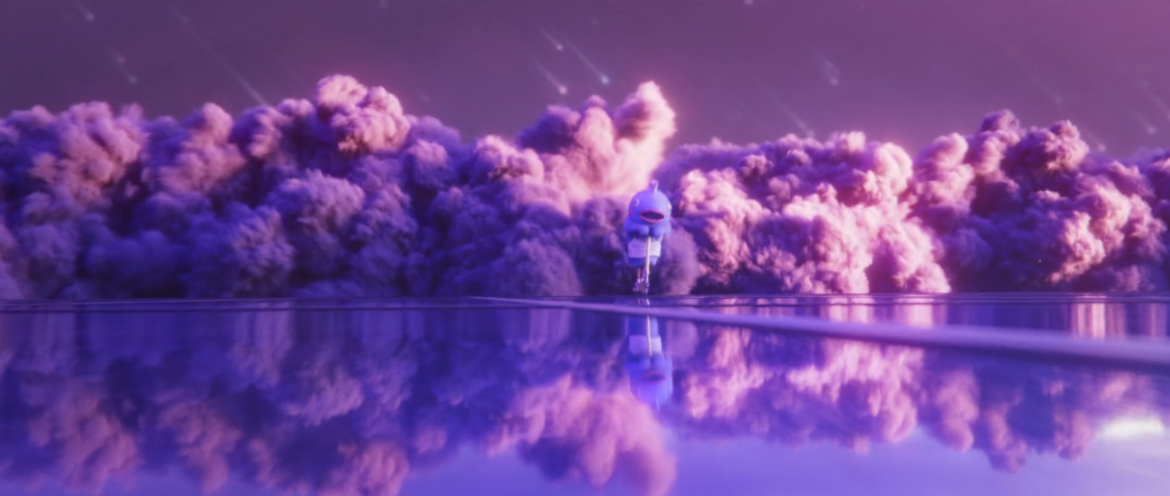
Although the gigantic comet may remind the viewers of films like Sunshine or Solaris, the visual R&D was driven by the optimization it required and was the result of fun experiments.
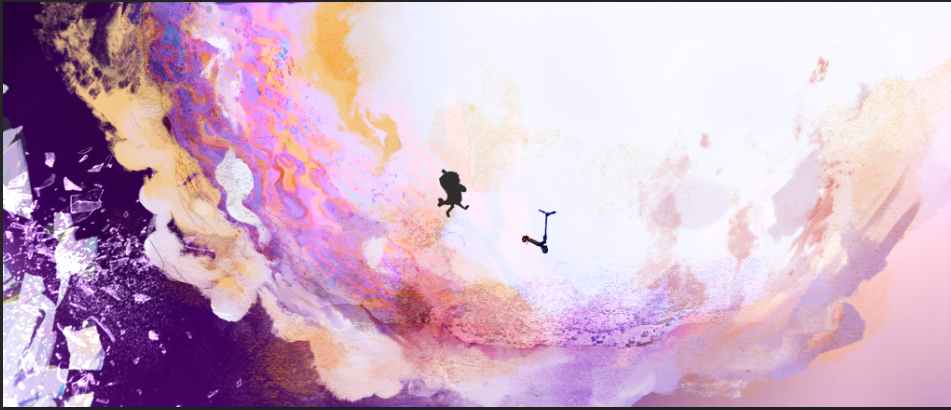
It was crucial to avoid simulating millions of particles, so an idea emerged. Instead of having a continuous flow of millions of particles following a trajectory, why not just use a few, simulate them more quickly, and increase the shutter length in rendering, like a photographer taking a picture with the light trails of cars. And then, slow down the effect in post-processing to make it look colossal.
The FX is done on a plane and not using a volume like a sphere; it’s the flow of particles, shading, and lighting that create this impression of volume. This approach helped give the impression of distance and gigantism to the celestial body, although it was rendered rather close to the camera.
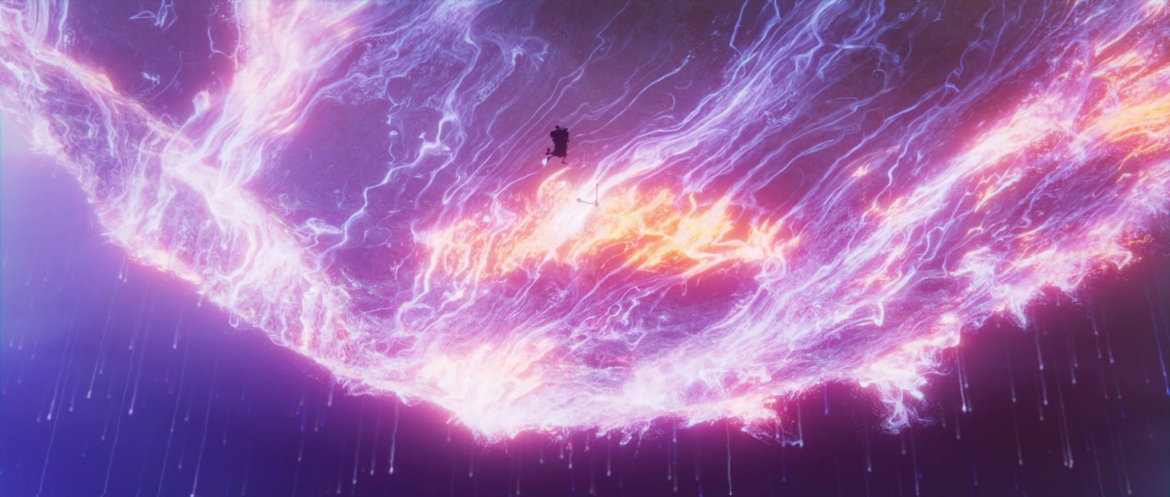
As for the small comets, I was inspired by the anime Your Name for the color and length of the trails. I sought to simplify them and give them a stylized look while retaining a touch of realism.
M: From the beginning, we knew we would have to rely on Houdini for the effects. The whole team was much more comfortable with Maya, so we kept scene assembly, lighting, and rendering there, except for scenes with glass waves where it didn’t make sense to bring everything back to Maya.
Some effects were exclusively rendered in Houdini.
We therefore had to develop custom tools to bridge these two software.
Among other things, I had to script a camera export tool, a tool to automate the creation of proxies for collisions, an .ass import tool, etc. The school also listened to us since they allowed us to unify the versions of Arnold for Houdini and for Maya, which was lifesaving to have the same DoF and motion blur between the two software and facilitate compositing.
3DVF: On the rendering/compositing side, did you encounter difficulties? Was it complex to keep acceptable rendering times, for example?
M: Arnold, the effects, the glass, the omnipresence of camera movements, and the desire to retain DoF and motion blur in rendering did indeed significantly increase our rendering times.
Our bet was therefore to minimize the compositing time on the shots as much as possible, hence the desire to achieve shots close to their final version right from lighting. Many shots required little compositing, although of course, there are exceptions.
We also used AI to help us; we used Topaz to upscale our shots that came out in 1k to then be upscaled to 2k. Denoising was also used. There is still noise on some shots unfortunately, but we preferred to keep it rather than make sacrifices that would have compromised the artistic direction of the project.
In compositing, the numerous camera movements required a lot of 3D compositing, integrating some effects was sometimes tedious, and deep compositing was considered for some shots but we didn’t have the means to implement it (storage, disk playback speed…).
E: Some shots took a long time to render, despite the upscale, especially those with glass and explosions. We couldn’t afford to make mistakes and have to re-render these shots, so it involved doing a lot of small test renders and being very careful. For compositing, most of the work had been done in rendering, but there were still some challenges, especially for integrating the meteors in the background.
3DVF: Let’s talk about that final sequence… How did you set it up, especially in terms of staging, lighting? We thought it might be a tribute to Rogue One, is that the case?
M: The final sequence was the climax of the film and the sequence we worked the most on in terms of staging and lighting.
The layout was quite complicated to set up; the set was very extensive and desolate, and it had to be cleared without giving the impression that it was empty.
Fog and atmosphere were used without too much moderation and actively contributed to the ambiance. There were many back-and-forths on some shots, in terms of colors and mood. There were many references, and I had to discuss a lot with Florian to try to understand which influences should prevail.
Estelle’s concepts directed a good part of this sequence and also contributed a lot to shaping it. In the end, many viewers appreciated this ending!
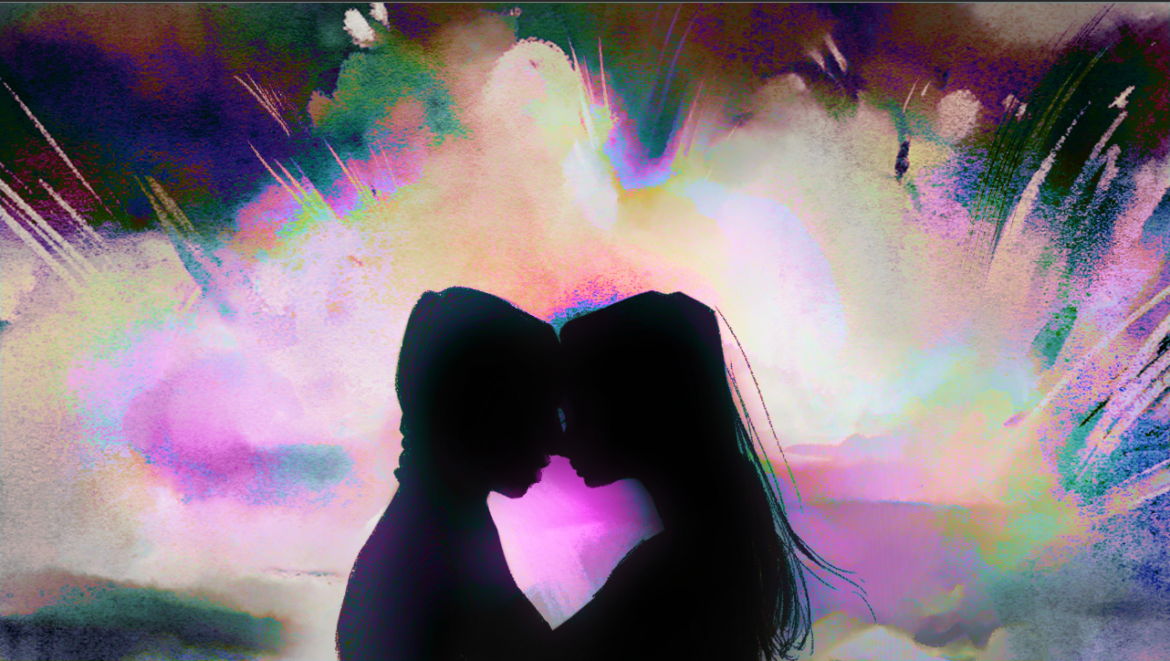
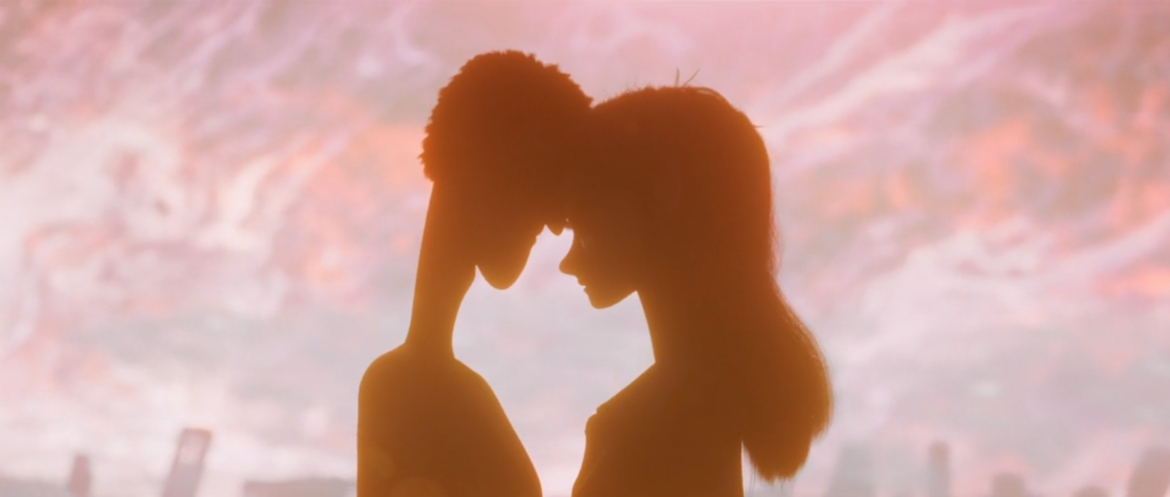
A: For this last sequence, the emotion rises. We chose to stretch this ultimate moment they spend together. After following this fish through all its adventures, we take the time to say goodbye to this world along with the characters. For the animation, I wanted to put a lot of tenderness but also intensity into it; they hug tightly to find the courage to accept the end.
F : Rogue One was more of a technical reference than a tribute, but yes, the fatalistic ambiance of the end of the film is really similar to ours, but it’s more like Sunshine or even Melancholia and the famous Akira that really inspired us during the writing process.
However, we had a very specific intention that was present as soon as the project presentation; we wanted the end to be accompanied by the song Jusqu’à ce que la force de t’aimer me manque by Catherine Ribeiro + Alpes! This song was really important in the creative process of our story and especially in the unfolding of the end! I thank the school for supporting us and for doing their best to try to get the rights, even if it didn’t work out.
3DVF: What it your overall takeway? And do you have any advice for future MoPA classes, who will also direct and create graduation films?
A: The team is proud to have finally finished this film and that it is well received. It’s very moving to see people react to it when they watch it; we feel that all this work is worth it. Organization and being aware of what is possible to do or not in a given time are very important. You also shouldn’t be afraid to dare original ideas; the graduation film is a special opportunity to try to push the boundaries of creativity. Trust and communication within a team are also essential.
M: The production was really like the film, a long crescendo where we had to continuously increase the intensity of work while bypassing the difficulties that arose. I am grateful to the team for keeping up and enabling the success of the project!
I would tell future classes that time management is essential and that even if sacrifices have to be made for the success of the project, they should not lose sight of the elements that contribute to the originality of their film and make it unique. Our film is living proof that we can maintain ambitions despite technical problems and delays…!
F: Don’t hold back in what you want to tell! Don’t be shy and let go while being aware of the technical limitations and the time you have! Graduation films may be one of the only opportunities in our lives to make a film almost independently. Group cohesion, trust, organization, communication, and knowing how to put your ego aside are the most important things. Even though we left some feathers along the way, working on this project was truly incredible! Especially since the theme of the film strangely matched the fact that it was our last year at MOPA, and it was funny to see that quite a few people in our class projected this turning point in our lives onto it.
Q: It was a really enriching experience; I really enjoyed working with the team. The ambition of the film was a real driving force for me; it really pushed me to excel. If I had to give advice to future classes, it would be to communicate well with the team, know how to sort out external opinions, and have fun with the film; the opportunity to make another one may not present itself. (And watch out for storage space for ambitious films haha…)
B: Personally, it was the best team experience I’ve ever had. I enjoyed pushing myself while working with an incredible team both in terms of skills and socially. I am very proud to have worked on this film, which touches me especially and which I hope will touch all those who are sensitive to it. If I have any advice, it’s to continue to believe in yourself even if you have doubts; you will come out of it grown.
For more information
- The team:
- Estelle Bonnardel (Resume on 3DVF / LinkedIn)
- Quentin Devred, FX Artist (Resume on 3DVF, Linkedin)
- Baptiste Duchamps (modeling/chara modeling/surfacing Resume on 3DVF/LinkedIn)
- Maxime Foltzer (Resume on 3DVF, LinkedIn)
- Florian Maurice (junior animator – Resume on 3DVF/LinkedIn)
- Astrid Novais, 3D animator (Resume on 3DVF, LinkedIn).
- MoPA in our list of CG schools.
- Follow 3DVF on social media: LinkedIn, X/Twitter, Facebook, Instagram, Youtube.
